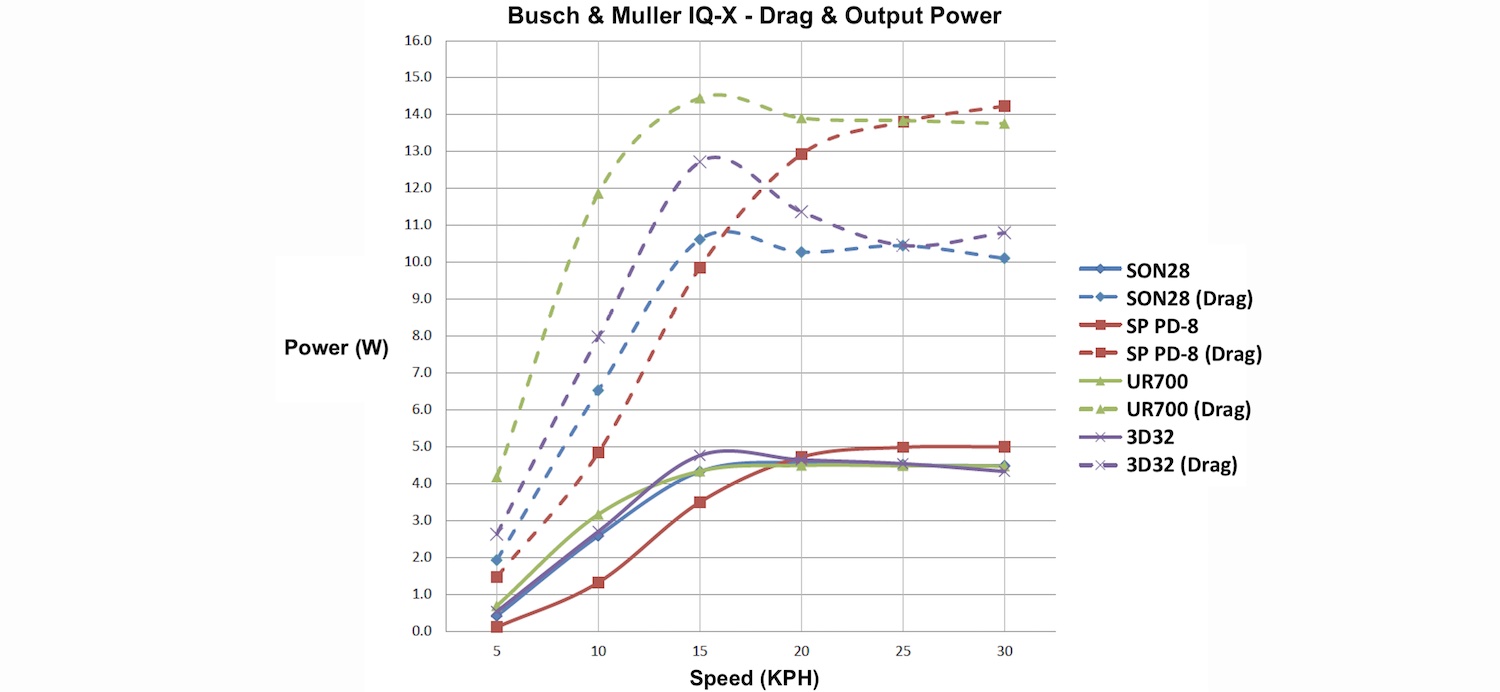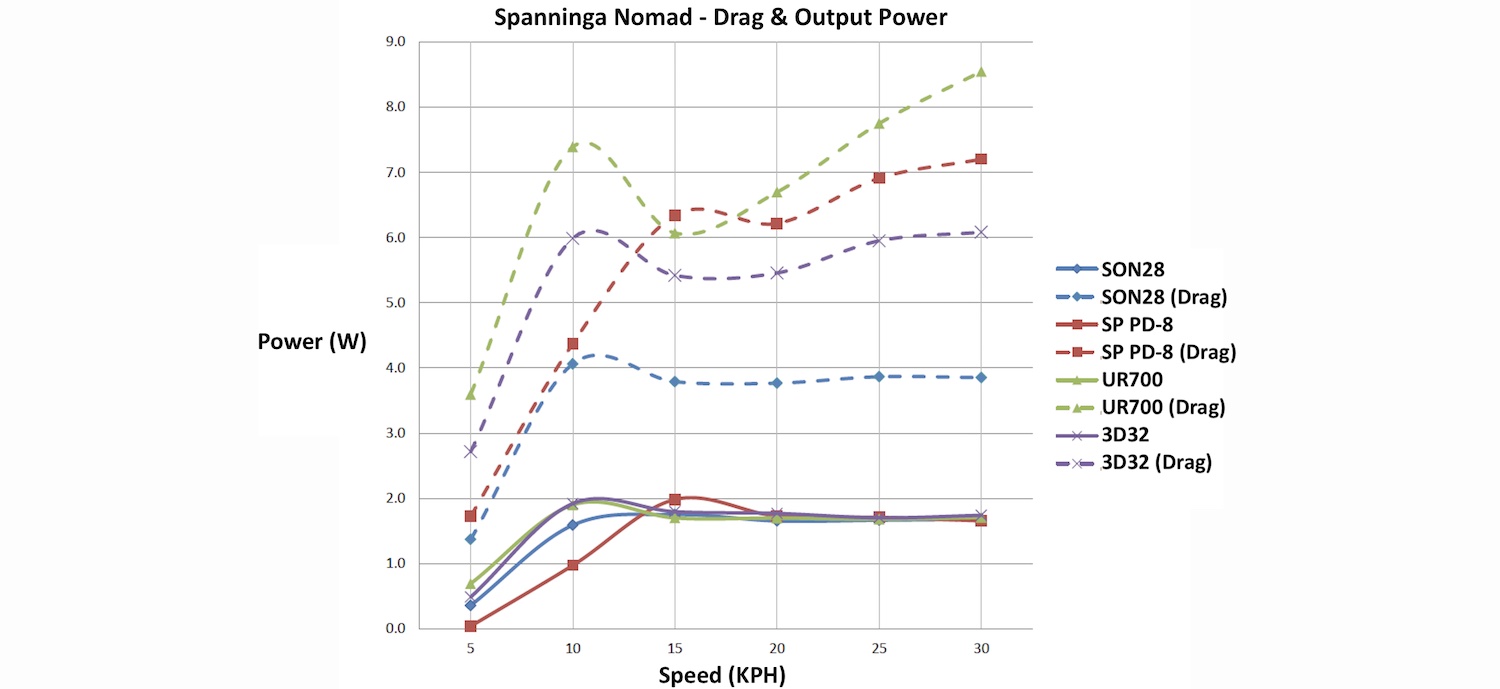The good news is that most nominally 3W rated generators can be persuaded to produce a lot more than 3W. The downside is that this increased power output is rarely allied to the highest levels of efficiency. Unsurprisingly different generators react differently to different loads, so some generators show well with some lights connected and not so well with others.
Some of these tests are summarised here;
https://www.cyclingabout.com/dynamo-hub ... n-shimano/
[edit; with data (and reprepared figures etc ) from this site https://translate.google.com/translate? ... asure.html]
It is not a simple set of tests but the results show that (of the hubs tested) the SON28 was the most efficient when connected to a typical load, (and in most cases not just by a little bit either).
With some high power lights, the drag exceeds the power output of the generator by up to 15W, i.e. the lamp might be using 9W but the generator is dragging nearly 25W. You will notice this!
However if you are running a simpler, low power light (they used a 40lux Spanninga 'Nomad' model to represent this type ) then it is closer to a purely resistive load (as per StVZO tests) and there is less difference in efficiency between hubs (in absolute terms).
For example with the B&M IQ-X as a load;

the lamp draws ~4-5W @ 15kph but incurs a 'drag overhead' of between ~6W and ~10W depending on which hub you use.
or the Spanninga as a load;

the lamp power (and light output) is less than half that of the IQ-X but the 'drag overhead' is between 2W and 5W, which is both less in absolute terms and less proportionately too.
Similar variations are seen in using chargers when paired with different hub generators.
Overall, the results are complicated but there are a few takeaways;
1) If you don't really need a super-bright light and are worried about drag, you can greatly reduce the total drag and/or the 'drag overhead' incurred.
2) there are some unexpected results; for example if you ride at ~25kph and use an IQ-X lamp there is no advantage to using a SON28 hub over the cheapest model on test, the shimano DH-3D32. Both are (at this speed and load) substantially more efficient than the other hubs on test.
So it pays to consider what your needs really are before choosing a hub and lamp combination. It is as well to note that this data was all generated with standard lamps; running two (lower power) lamps in series may be a substantially more efficient way of generating more light at speed, when you need it (in the simplest terms because generator efficiency is more closely related to the current drawn rather than the voltage), so there may be more life left yet in the old trick of running more than one headlamp at higher speeds.
All very, er, illuminating!
cheers

